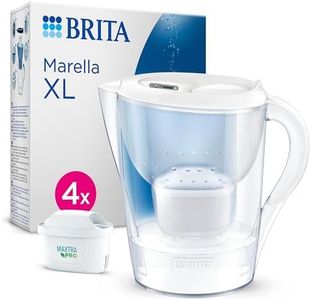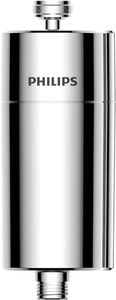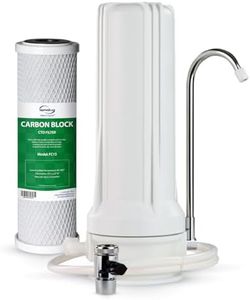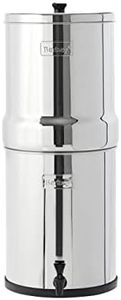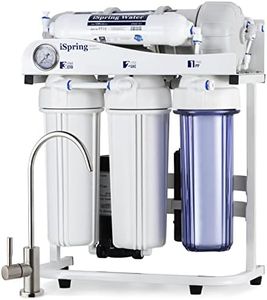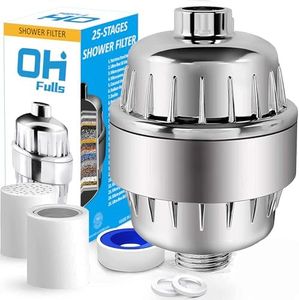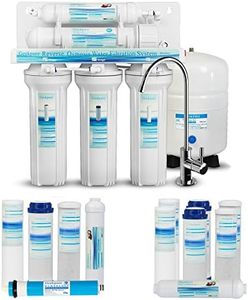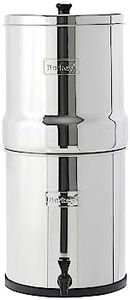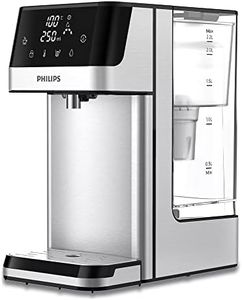We Use CookiesWe use cookies to enhance the security, performance,
functionality and for analytical and promotional activities. By continuing to browse this site you
are agreeing to our privacy policy
10 Best home water filters
From leading brands and best sellers available on the web.By clicking on a link to a third party's website, log data is shared with that third party.
Buying Guide for the Best home water filters
Choosing a home water filter can seem overwhelming due to the variety of options available, but keeping a focus on your household needs and understanding the key features will make the process much easier. Start by identifying what you want your filter to treat or remove from your water – this could be taste issues, chlorine, heavy metals, or microbes. Think about the size of your household and how much water you use daily, as this will affect the filter type and capacity you need. Practical considerations, such as installation requirements and maintenance, should also factor into your decision. By focusing on these main points and understanding the specs, you'll be able to find a filter that makes your water cleaner and healthier.Filtration TechnologyFiltration technology refers to the method the filter uses to remove contaminants from your water. Common types include activated carbon, reverse osmosis, ultraviolet (UV), and ceramic. Activated carbon is great for improving taste, removing odors, and reducing chlorine, making it suitable for those primarily wanting better-tasting water. Reverse osmosis is more powerful and removes a wider range of contaminants including heavy metals, but it’s slower and wastes some water. UV filters target bacteria and viruses, which is ideal if you’re concerned about microbes. Ceramic filters handle sediments and some bacteria. Understanding what your water source needs treatment for will help you choose the right technology; for example, if your main worry is taste and smell, activated carbon could be enough, but if you're worried about pathogens or heavy metals, you might opt for more advanced technologies.
Filter CapacityFilter capacity is about how much water the unit can filter before the cartridge needs replacing. Small pitchers may filter a few dozen gallons before needing a change, while whole-house systems can handle thousands of gallons. For individual or small family use, lower-capacity models can be manageable and cost-effective. For larger families or if filtering all household water, choose a higher-capacity system to reduce maintenance and ensure a consistent supply of clean water.
Contaminants RemovedThis spec tells you which pollutants the filter can actually remove. Filters are tested against standards that list contaminants like lead, chlorine, pesticides, bacteria, or microplastics. Some filters are very specific, while others are multi-purpose. Check if the product is certified for removal of the particular contaminants that concern you – this often appears in the product’s paperwork or official website. Tailoring your choice to your actual concerns (e.g., if your water test shows high lead, seek a certified lead-removal filter) ensures you’re not paying for unnecessary features, or missing something important.
Installation TypeInstallation type details whether the filter is a pitcher, countertop, under-sink unit, faucet attachment, or a whole-house system. Pitchers and faucet attachments are easy to install and require no plumbing changes, ideal for renters or those wanting simplicity. Under-sink and whole-house systems are more permanent and may require professional installation but offer better performance and convenience for larger households. Choose a setup that fits with your living situation and water usage.
Maintenance RequirementsMaintenance refers to how often you need to change the filter elements and clean the system. Some filters need monthly cartridge changes; others run for six months or more between changes. Consider your willingness and ability to perform regular upkeep—if you prefer low-hassle, opt for filters that have longer-lasting cartridges or reminder systems so that keeping the water clean doesn’t turn into a chore.
Flow RateFlow rate measures how quickly the filtered water comes out, typically noted in gallons per minute (GPM) or liters per minute. Low flow rates in things like pitchers and faucet mount filters may be fine for individuals or small families not using much water at once. Higher flow rates are important for showers, cooking, and large households, to ensure everyone has access without waiting. Consider your daily routines—if you dislike waiting or have a busy household, prioritize a system with an appropriately high flow rate.



